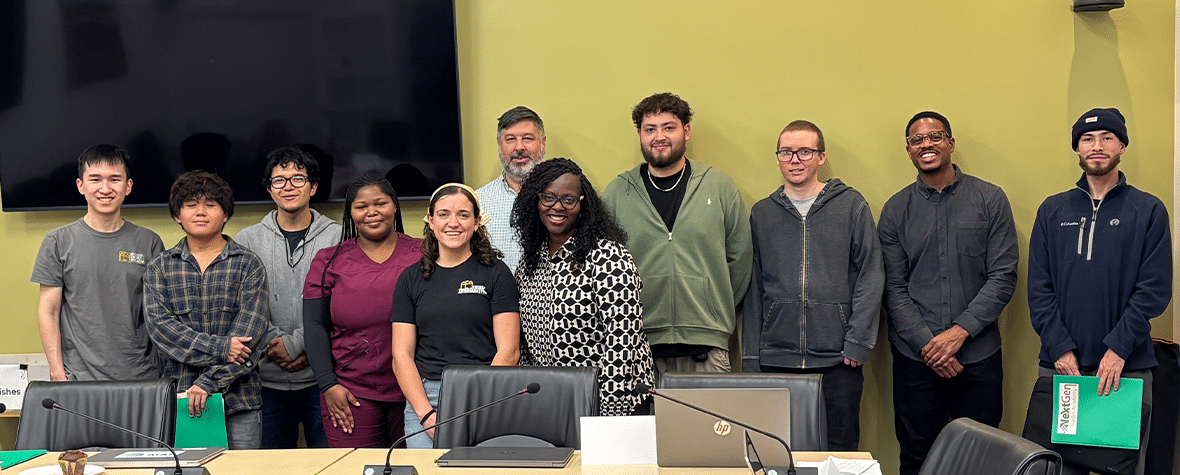La série Energy 101 de MCE se concentre sur le pourquoi et le comment des énergies renouvelables afin que vous puissiez en apprendre davantage sur des concepts tels que les avantages de la biomasse et la science derrière l'énergie solaire.

Quels sont les avantages de l'hydroélectricité ?
- C'est l'un des le moins cher les sources d'énergie.
- Il est fiable et peut produire de l'énergie en permanence.
- Les centrales hydroélectriques sont extrêmement efficaces et peuvent convertir jusqu'à 90% d'énergie en électricité.
- L'hydroélectricité ne produit pas de gaz à effet de serre ni de déchets.
Quels sont les inconvénients de l'hydroélectricité ?
- L'énergie hydroélectrique dépend du niveau de l'eau et fluctue en fonction des précipitations.
- Il perturbe les habitats naturels, la migration des poissons et les plantes et animaux indigènes.
- La construction de réservoirs et de barrages peut entraîner le déplacement de communautés et augmenter le risque d'inondation.
Comment l'énergie hydraulique est-elle transformée en électricité ?
Barrage hydroélectrique
Les barrages hydroélectriques remplissent un réservoir en limitant l'écoulement de l'eau en aval. L'eau s'écoule en aval par une petite ouverture dans le barrage, où elle fait tourner des turbines et génère de l'énergie mécanique. Un générateur convertit ensuite l'énergie mécanique en électricité.

Stockage par pompage
Le pompage-turbinage est un type de centrale hydroélectrique qui permet de stocker l'énergie produite par les ressources éoliennes et solaires pendant les périodes de faible demande, jusqu'à ce qu'elle soit nécessaire. L'énergie éolienne ou solaire est utilisée pour pomper l'eau en amont d'un réservoir lorsque la demande d'électricité est faible et que la production d'énergie est élevée. L'eau est libérée et fait tourner des turbines lorsqu'elle redescend pour produire de l'électricité pendant les périodes de forte demande.

Centrales au fil de l'eau
Les centrales hydroélectriques au fil de l'eau utilisent l'écoulement naturel de l'eau dans une rivière plutôt qu'un grand réservoir. Comme elles ne stockent pas l'eau, les centrales au fil de l'eau dépendent du niveau d'eau saisonnier et ont généralement une capacité de production plus faible. Ces centrales ont une empreinte environnementale plus faible que les barrages hydroélectriques et sont moins susceptibles de provoquer des inondations.
Quelle est la différence entre les grandes et les petites centrales hydroélectriques ?
Les centrales hydroélectriques varient en taille et en capacité de production. Les grandes centrales hydroélectriques sont des barrages à grande échelle qui ont une capacité de plus de 30 mégawatts, alors que les petites centrales hydroélectriques produisent généralement moins de 10 mégawatts.
Pourquoi les grandes centrales hydroélectriques ne sont-elles pas considérées comme une source d'énergie renouvelable ?
Les petites et grandes centrales hydroélectriques sont considérées comme des sources d'électricité sans carbone. Les petites centrales hydroélectriques sont également considérées comme renouvelables. En revanche, les grandes centrales ne sont pas considérées comme renouvelables dans l'État de Californie parce qu'elles perturbent l'environnement. Les ressources sans carbone telles que les petites et grandes centrales hydroélectriques jouent un rôle important en aidant MCE et la Californie à atteindre leurs objectifs climatiques.
Faits amusants
- Jusqu'en 2019En 2008, l'hydroélectricité était la plus grande source d'électricité renouvelable aux États-Unis.
- La plus ancienne centrale hydroélectrique des États-Unis est la Centrale hydroélectrique de Whiting dans le Wisconsin, qui a commencé ses activités en 1891.
- Les chutes du Niagara sont la plus grande source d'électricité de l'État de New York, produisant suffisamment d'électricité pour éclairer la ville de New York. 24 millions d'ampoules électriques immédiatement.




